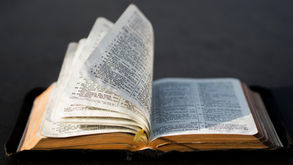What is Ayyam-i-Ha
- Uplifting Words
- Mar 18, 2020
- 1 min read

The "Days outside of time" holy days begin for members of the Bahá'í faith, as the Ayyam-i-Ha Festival, or Intercalary Days. Until the evening of March 1, Bahá'ís mark a pause in their 19-month calendar: "additional days" are used to raise awareness of God's unity, along with a focus on charity and unity. Ayyam-i-Ha, literally, the Days of Ha, plays with a double meaning of "Ha": Ha, the first letter of an Arabic pronoun commonly used to refer to God, is used as a symbol of the essence of God in Bahá'í writings; the Arabic abjad system system designates the letter Ha as having a numerical value of five, which has always been the maximum number of days allowed for the Ayyam-i-Ha period. Baha'u'llah designated that Ayyam-i-Ha should be filled with "good cheer" and "joy and good cheer". Good cheer for Bahá'ís, their relatives and recipients of the Bahá'ís' charity. During a leap year, Ayyam-i-Ha incorporates the additional day, before the start of the nineteen-day fast and the month of Ala. When Bab began creating a calendar for Babi's new religion in the 1840s, collation, which is not practiced in Islam, was implemented to differentiate it from the existing Islamic calendar. When the Bab did not specify where the Intercalary Days should be inserted, Baha'u'llah, the one foretold by the Bab, designated that they should be placed before the month of Ala. Today, the Bahá'ís still observe the Nineteen-Day fast throughout the month of Ala. A new year begins the day after Ala ends.


















